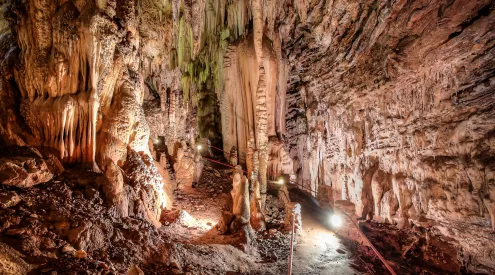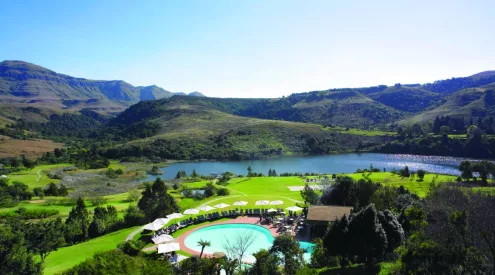I spent some nights in northern Natal game parks with my friends. I admit to being a not-very-good, but avid twitcher. My aim was to add as many ‘lifers’ as possible to my growing bird list. The mission was to find, among others, the elusive Pel’s fishing owl and the African finfoot
We stayed in chalets at Mkhuze Game Reserve. There were plenty of nyala and impala on the reserve and around the camp, all very habituated. We didn’t see any of the claimed rhinos or elephants, but savoured the fantastic sunset over the pan. We did the Fig Forest Walk in the company of their knowledgable local bird guide, Jabulani and it was a birding success. I added about nine new species to my list that walk. The Fig Tree Forest is filled with giant, old beautiful sycamore fig trees that look like melted candle wax.
Then it was on to Phinda Mountain Lodge. I liked the African chic and the rooms have fantastic bathrooms. I particularly liked the decks, private plunge pools and lovely outdoor showers. The weather was overcast and it rained both evenings – we were caught in a spectacular thunderstorm on the second night. The food was as good as you'd expect at a five-star lodge and we were welcomed back from the thunderstorm game drive with steaming Irish coffees. We had a super sighting of a crash of rhinos really close to the vehicle.
Tembe Elephant Park was next, famed for some of the biggest elephants in the world. Tembe Lodge is partly owned and wholly managed by the local community. It is a great tented lodge – not luxurious, but the staff are very courteous and the simple, wholesome food was great. I highly recommend it to those who want to experience more inexpensive tented game lodge accommodation and hospitality.
Much of the reserve has sea sand roads and is only accessible in a 4×4. They will collect you at the gate if you are driving a sedan. The coastal bush is interspersed with pockets of sand forest and my bird list grew by another six species. I didn’t get to see the plainbacked or Neergard’s sunbirds, but I’ll definitely go back for another visit to find them. I did get to see samango monkeys for the first time ever.
We did not see as many elephants as we expected, partly because the coastal bush is so dense and the pachyderms seem to melt into the vegetation. A couple of those we did see had enormous tusks. When we met them on the narrow sandy roads at dusk, they were quite happy to rev us with a bit of earflapping and snorting and then off the road and walk between the game vehicle and dense bush, once again melting into it.
The last two nights we spent at Ndumo Game Reserve. This reserve is famed for its birdlife, so the pressure was now on for the still elusive Pel’s and the finfoot. The chalets were nice, each with a kitchen area, but no toilet or shower (strange, I thought) so the chalets share ablutions with the camping sites. This can get busy early in the morning when everyone wants to go game driving early.
The crocodiles there are huge. Apparently most of them are escapees from the old Ndumo Croc Farm – courtesy of Cyclone Demoina in the late 80s. We'd been advised once again to book the services of a local guide to help us find 'our birds' and we enlisted Tembisa for the job.
He warned us about wandering hippos – apparently a previous group had met one on a recent forest walk, so we were alert. Tramping uncontrollably nosily through the deep carpet of leaves on the forest floor, I thought we’d scared everything away, including the birds. Then, walking along the steep bank of a quiet stream we found ourselves eyeball to eyeball with a hippo in the water.
My immediate thought was, 'he has a big enough escape route in the water and couldn’t possibly make it up the almost vertical bank to scare us.' Tembisa indicated: no one move. We watched and waited. Suddenly, from the dense overhanging branches a solitary finfoot swam out past the hippo’s nose and paddled across the stream to the overhanging branches on the other bank.. We started to giggle; the hippo submerged and disappeared. Phew and yippeee – smiles all round
We traipsed around the forest floor along the stream and river banks for another hour searching in every tall dark tree, the owl’s preferred roost Tembisa, but . . . . alas. . . . still no Pel’s Fishing Owl.
I’ll have to go back.


















